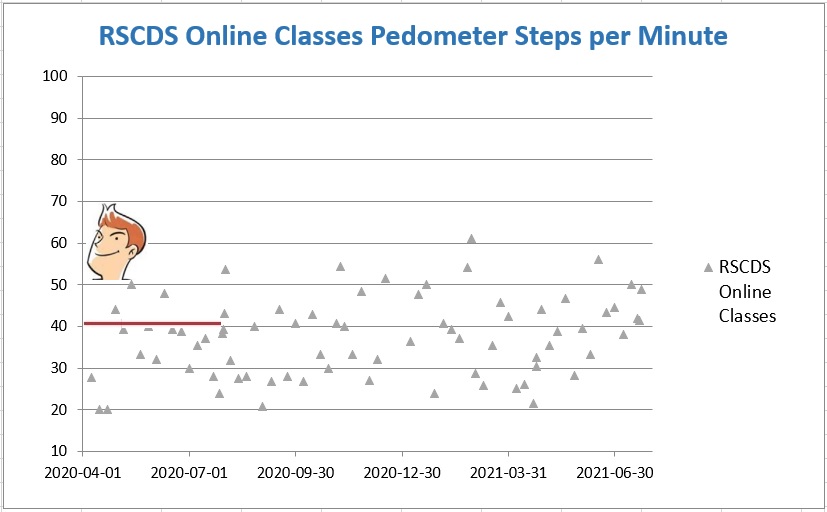
| Volume 37 #3 | November/December 2020 | |
I value Scottish dancing for our ability to move to music in order to promote physical and mental well-being. I like to attend high-activity dancing classes. Scottish country dancing classes can be very active indeed. However, a significant number of classes I have attended have more talking and less dancing. I authored a 2014 newsletter item titled
Move to the Beat of the Music
that measured Activity Time Percentage for classes and dances of six types of folk dancing. Scottish dance classes that move dancers 40% of the time or greater gave me a positive interest level, while less than 40% gave me a neutral or negative interest level.

|
I resumed recording my dancing activity nearly three years ago with a simplified measurement that calculates pedometer Steps per Minute, including any short breaks in a class or dance. Continuous walking equals 100 steps/minute, so the measured Steps per Minute is an approximation of the Activity Time Percentage value.
I attended the RSCDS
online
Wednesday and Summer Celebration classes, measuring Steps per Minute. The chart displays the proportion of classes that reached my positive interest threshold (red line). We note that the
30-minute class format constrains what can be accomplished. However, we observe that several classes succeeded to keep dancers moving.
Scottish dance teachers could consistently raise the Activity Time Percentage above 40% by structuring a class with a combination of teaching new material and giving dancers more opportunity to practise what they have learned. Classes typically teach all new dances but rarely return to practise the learned dances. It takes about twice as much time to teach a new dance compared with dancing a learned dance. Teaching fewer dances and practising more dances leads to more dancing. The increased practice improves dancers' confidence.
 |
In the RSCDS archive I discovered a 1958 article titled
Scottish Country Dancing in Primary Schools.
It describes how two New Zealand school teachers incorporated Scottish Country Dancing into their school's physical education program. In the lesson pattern they developed (see insert), steps number 4 and 5 provided an optimal combination to teach and practise.
Suggestion: that Scottish dance teachers adopt a similar pattern, to keep dancers moving above 40% with a combination of teaching new material and giving dancers more opportunity to practise with dances they have learned.